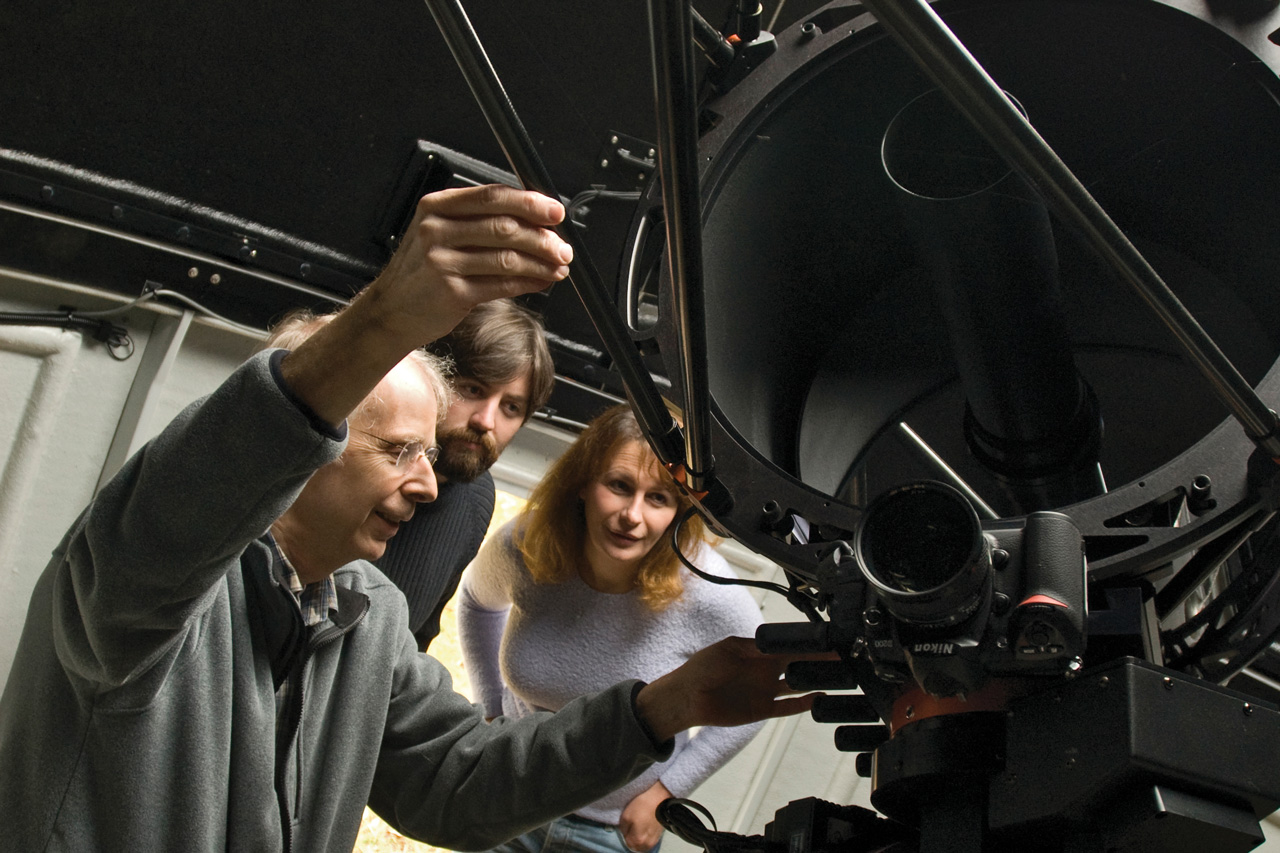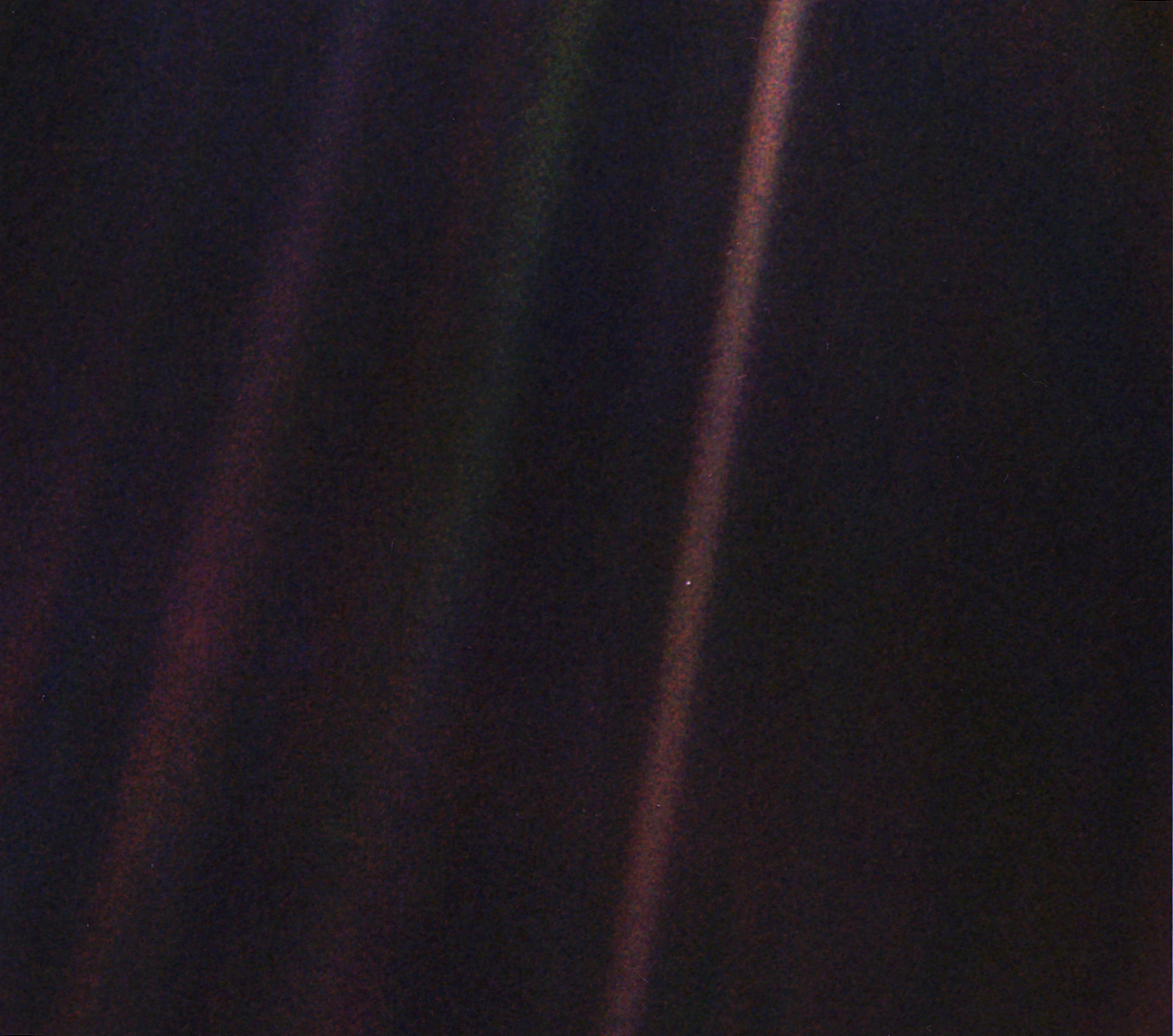
Karen Collins
Astrophysicist
University of Louisville, Kentucky
Astrophysics
I’m originally from Dalton, Georgia, a small town just south of Chattanooga, Tennessee. I lived in Atlanta, Georgia, for most of my adult life until I moved to Louisville, Kentucky, in 2002. I currently reside in Louisville, working mostly remotely for the Smithsonian Astrophysical Observatory at the Harvard-Smithsonian Center for Astrophysics.
Watching the moonshots as a child in the late 1960s, and then discovering the original “Star Trek” series reruns during the 1970s and 1980s.
My first career was in electrical engineering. After helping build a startup company in the late 1990s and then selling it, I decided to go back to school in my late forties and work on a graduate-level physics program. During this time, I took an astrophysics course and realized through a term project that our knowledge of exoplanets — planets outside our solar system —was growing by leaps and bounds. I wanted to be part of mankind's first exploration of planets outside our solar system by using a telescope to travel though the galaxy rather than traveling in a spacecraft — although I'm still hoping for that too. :)
I’m part of the TESS Objects of Interest team that analyzes data observed by the TESS spacecraft to determine which planet candidates are the best ones to attempt to confirm using ground-based telescopes. I also lead the TESS Follow-up Observing Program (TFOP) group, which conducts ground-based photometric observations that help confirm and characterize TESS planet discoveries and reject other planet candidates as false-positives. In other words, we look for dips in the brightness of stars caused by orbiting planets, and we make sure the signals TESS observed are caused by planets and not something else.
Well, of course TESS is my current favorite project. Before TESS, I worked on the Kilodegree Extremely Little Telescope (KELT), which is a ground-based transit search project. In many ways, TESS could be thought of as four KELT telescopes on orbit. The KELT follow-up team is also a model for how large collaborations can work together to produce great science and provide a platform that springboards students and postdocs into great careers in astronomy. I also enjoyed leading the development of an astronomical image data reduction program — a tool for turning raw telescope data into something scientists can interpret — called AstroImageJ. I still use this program in my daily work.
I completed my astrophysics graduate work at the University of Louisville in Kentucky. The school had a small but growing astrophysics program within its physics department — and this would have normally limited my interactions with experts in the field — but I had three fortunate breaks. The first was being awarded a graduate fellowship from the Kentucky Space Grant Consortium, which provided working relationships with scientists within NASA. The second was the installation of a telescope at the university’s Moore Observatory that was ideally configured for transiting exoplanet photometry. The third was a fortunate connection with the KELT team, which provided me with great observing and data reduction opportunities, great connections with KELT team leadership, and what I hope will be career-long working relationships with brilliant grad students. The KELT opportunity, combined with NASA funding and the university’s telescope facilities, provided the springboard that made it possible for me to have the “right stuff” to work on the TESS mission.
It's a bit silly, but I think the biggest personal challenge was developing relationships with other students since I was an older — late forties — graduate student. At conferences, most students thought I was a professor, and most professors already had long-time relationships in the field. That, combined with my shyness around people I don't know, led to a very slow accretion of new acquaintances in the field. However, becoming involved in the supportive KELT team instantly solved that challenge.
Albert Einstein and basically all astronauts, but especially the Apollo 11 crew: Michael Collins, Neil Armstrong and Buzz Aldrin. I put Michael Collins' name first because he risked it all in the name of exploration, but did what he had to do to make the mission a success (i.e., stayed behind in the command module orbiting the Moon).
Build a strong math and science foundation by mastering small increments to your knowledge and skill set on a daily basis, rather than trying to play catch up just before tests, or thinking that one little idea that you don't understand will not matter in the long run. It will. It is difficult, but not impossible — both subjects are much easier to master if kept up with on a daily basis.
I participate in ultra-marathons. My goal is to finish two to three 100-mile ultra marathon foot races each year.

Carl's Sagan's brilliant idea for a Voyager 1 image — the so-called "pale blue dot" image of Earth from beyond Neptune.
Planetary science is a global profession.

